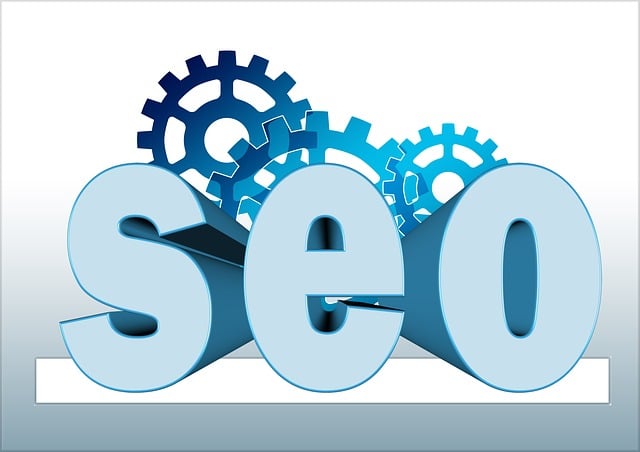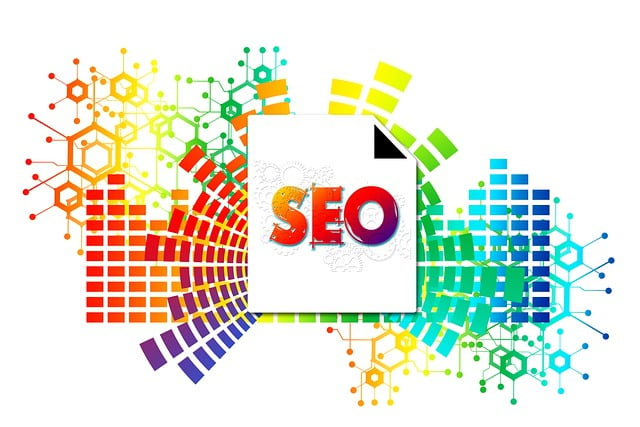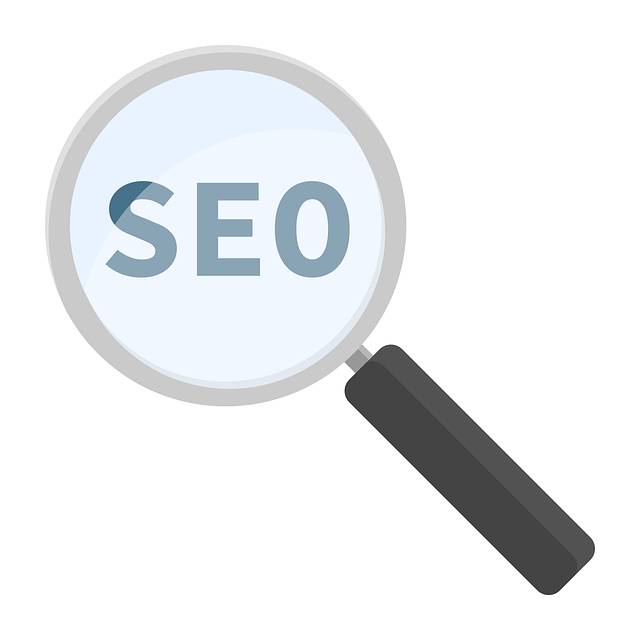Meta tags are essential components of On-Page SEO, providing search engines with key information about webpage content. Effective optimization includes crafting concise, descriptive title tags (under 60 characters) and compelling meta descriptions (150-160 characters), both incorporating relevant keywords naturally. Keyword research using tools like Google Keyword Planner or SEMrush is crucial for identifying user intent and competition. Schema markup enhances meta tag optimization by providing structured data for rich snippet displays, improving visibility and click-through rates. Technical aspects like crawlability, user experience (e.g., mobile responsiveness), and page loading speed also significantly impact On-Page SEO performance. Specialized tools aid in efficient meta tag management, maintaining consistency and accuracy while tracking analytics. Regular updates based on trends and search engine algorithms are vital for optimal On-Page SEO results.
In the digital landscape, effective On-Page SEO strategies are key to boosting online visibility. One often-overlooked yet powerful tool is meta tag optimization. This article guides you through the intricacies of this process, from understanding the fundamental role of meta tags in SEO to exploring various types and their optimization techniques. Learn how to craft compelling title tags, optimize meta descriptions for higher click-through rates (CTRs), and discover the impact of schema markup. Additionally, we’ll cover technical considerations and introduce valuable tools for efficient meta tag management.
Understanding Meta Tags and Their Role in On-Page SEO

Meta tags are essential elements of on-page SEO, acting as a bridge between your website content and search engine algorithms. They provide concise information about a webpage’s content, context, and importance, helping search engines understand what the page is about and who it’s for. These tags include meta titles and descriptions, which are crucial for both user experience and search engine visibility.
The meta title, typically displayed in search engine results pages (SERPs), is a concise summary of the webpage’s content. It influences click-through rates as users scan SERP results. The meta description, though not directly ranked by search engines, can enhance clickability and provide a brief overview to users, enticing them to visit your site. Effective use of meta tags ensures that your website appears more relevant in search results, driving organic traffic and boosting on-page SEO performance.
Types of Meta Tags: Essential Elements for Optimization

Meta tags are crucial elements within the HTML code of a webpage, playing a pivotal role in on-page SEO. They provide search engines with concise information about the content and context of your pages, enhancing their understanding and subsequently improving visibility in search results. There are two primary types of meta tags: meta title and meta description.
The meta title, often displayed as the page title in browser tabs or search engine results, is a critical component for capturing user attention and influencing click-through rates. It should be descriptive, incorporating relevant keywords while staying concise and compelling. Meta descriptions, on the other hand, offer a brief summary of the content below, appearing beneath the title in search results. Well-crafted meta descriptions can further enhance click-throughs by providing users with a clear understanding of what they can expect from the page.
Optimizing Title Tags: Crafting Compelling Titles

Optimizing title tags is a crucial aspect of on-page SEO, as it’s one of the first things search engines and users interact with. A compelling title tag should be concise, yet descriptive, accurately reflecting the content of the page while incorporating relevant keywords naturally. It serves as a powerful tool to attract clicks from potential visitors, as well as help search engines understand the context and intent behind each webpage.
Crafting effective title tags involves balancing creativity and strategy. You want to create titles that are unique, engaging, and informative—all while adhering to best practices for on-page optimization. This includes keeping titles under 60 characters to ensure they’re fully displayed in search results, using keywords strategically at the beginning, and incorporating brand or site name for better recognition. Ultimately, a well-optimized title tag boosts click-through rates and improves a page’s overall visibility in search engine rankings.
Meta Description Best Practices for Click-Through Rates (CTRs)

A well-crafted meta description is key to boosting Click-Through Rates (CTRs) in search engine results, an essential aspect of On-Page SEO. When crafting this tag, keep it concise and compelling, typically around 150-160 characters, as this is the approximate length users scroll on a page before making a decision. The description should summarize the content, highlighting its unique selling points while enticing readers to click.
Focus on using relevant keywords naturally, mirroring the terms potential visitors might search for. Include a call to action that reflects what users can expect when they visit the page. By balancing these elements effectively, you’ll attract more organic traffic and improve your site’s visibility in search engine rankings.
Keyword Research and Placement Strategies for Meta Tags

Keyword research is a fundamental aspect of meta tag optimization, serving as the cornerstone for any successful on-page SEO strategy. It involves identifying relevant keywords and phrases that potential users might search for when looking for content similar to yours. Tools like Google Keyword Planner or SEMrush can assist in uncovering search volume, competition, and related keywords, helping you select the most effective terms to include.
Placement strategies for meta tags ensure these keywords are strategically incorporated into your HTML code. Title tags should ideally include the primary keyword, presenting a concise and compelling description of the page content. Meta descriptions, while not directly ranked, provide a chance to further emphasize keywords in a way that might entice users to click through from search results. Aligning both title and meta descriptions with your target keywords enhances their relevance, boosting the overall on-page SEO performance.
The Impact of Schema Markup on Meta Tag Optimization

Schema markup plays a pivotal role in enhancing meta tag optimization, particularly within the realm of on-page SEO. By providing structured data to search engines, schema markup allows for more accurate and rich snippet displays in search results, significantly boosting online visibility. This structured format helps search engine algorithms better understand content nuances, enabling them to index pages efficiently and deliver relevant results to users.
When incorporated into meta tags, schema markup enriches the overall user experience by displaying information snippets directly within search result listings. These snippets can include ratings, reviews, pricing details, or event schedules, all of which are crucial for capturing potential visitors’ interest. Such enhanced search result presentations can drive more click-throughs and improve website conversion rates, ultimately contributing to better on-page SEO performance.
Technical Considerations for Effective On-Page SEO Implementation

Implementing effective on-page SEO strategies requires a keen eye for detail and an understanding of technical aspects that often go unnoticed. One crucial consideration is ensuring your website’s structure is crawlable and user-friendly. This means creating logical, hierarchical page layouts with clear navigation, making it easier for search engine bots to navigate and index content. Proper use of HTML tags, including title tags and header tags (H1, H2, etc.), is essential. These tags provide valuable context to both users and search engines about the content on each page.
Additionally, optimizing meta descriptions and ensuring they are unique, engaging, and include relevant keywords can significantly impact click-through rates. Other technical optimizations include improving page loading speed by compressing images and leveraging browser caching, as faster websites enhance user experience and are favored by search engines. Mobile responsiveness is another critical factor; with the majority of web traffic coming from mobile devices, ensuring your site adapts to different screen sizes is a must for effective on-page SEO implementation.
Tools and Tips for Efficient Meta Tag Management

Efficient meta tag management requires a strategic approach and the right tools. For on-page SEO, utilizing all-encompassing SEO software can streamline the process significantly. These tools offer features like bulk editing, automatic keyword suggestions, and analytics tracking, enabling you to optimize multiple pages concurrently while ensuring accuracy. With such technology at your disposal, every meta title and description can be crafted with precision, aligning perfectly with your target keywords.
When managing meta tags, consistency is key. Establish a standardized format for titles and descriptions, adhering to best practices. Ensure each meta title is unique, compelling, and includes relevant keywords. Similarly, meta descriptions should provide a concise summary of the page’s content, enticing users to click while incorporating targeted terms naturally. Regularly reviewing and updating these tags based on changing trends and search engine algorithms is also vital for maintaining optimal on-page SEO performance.
